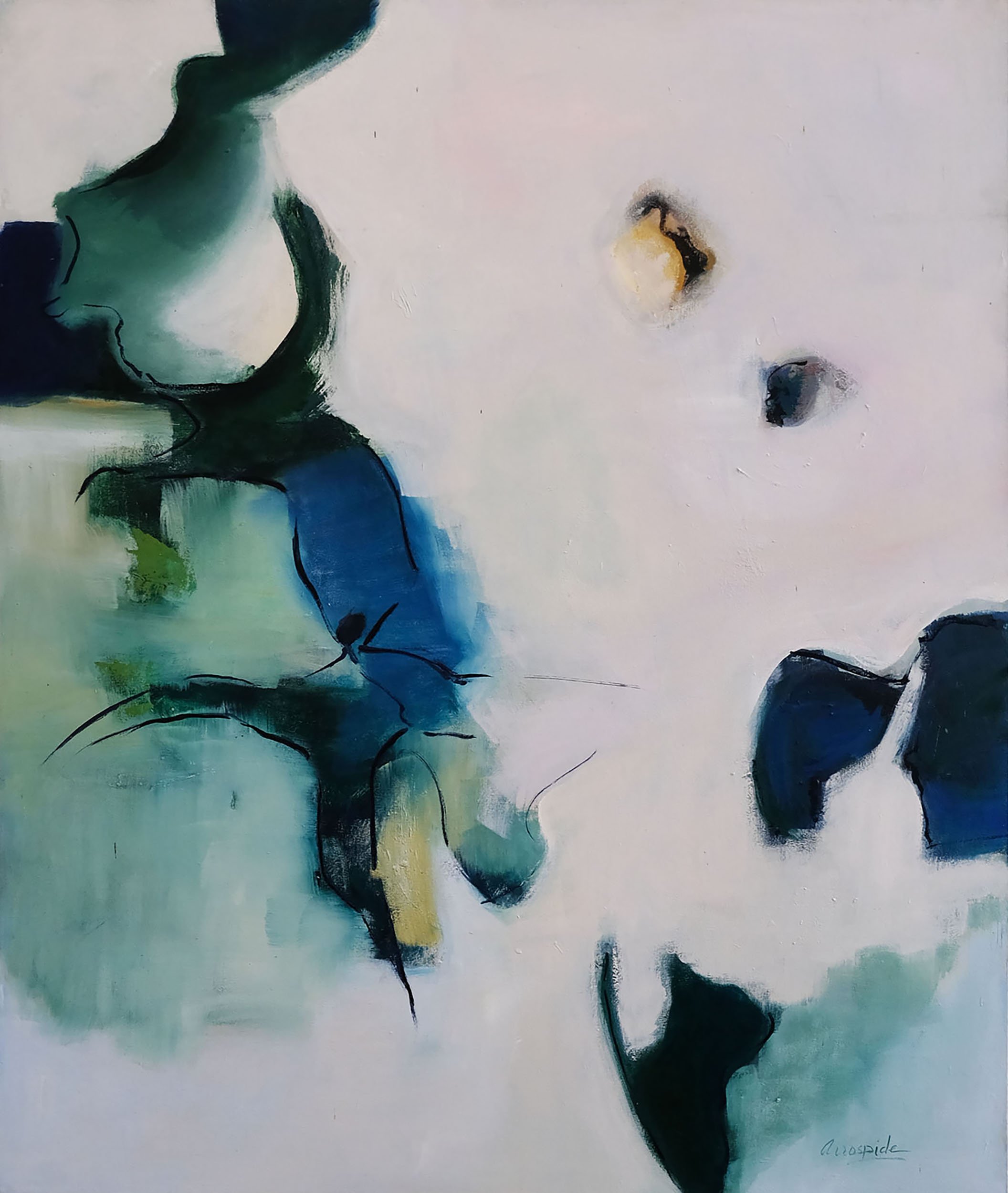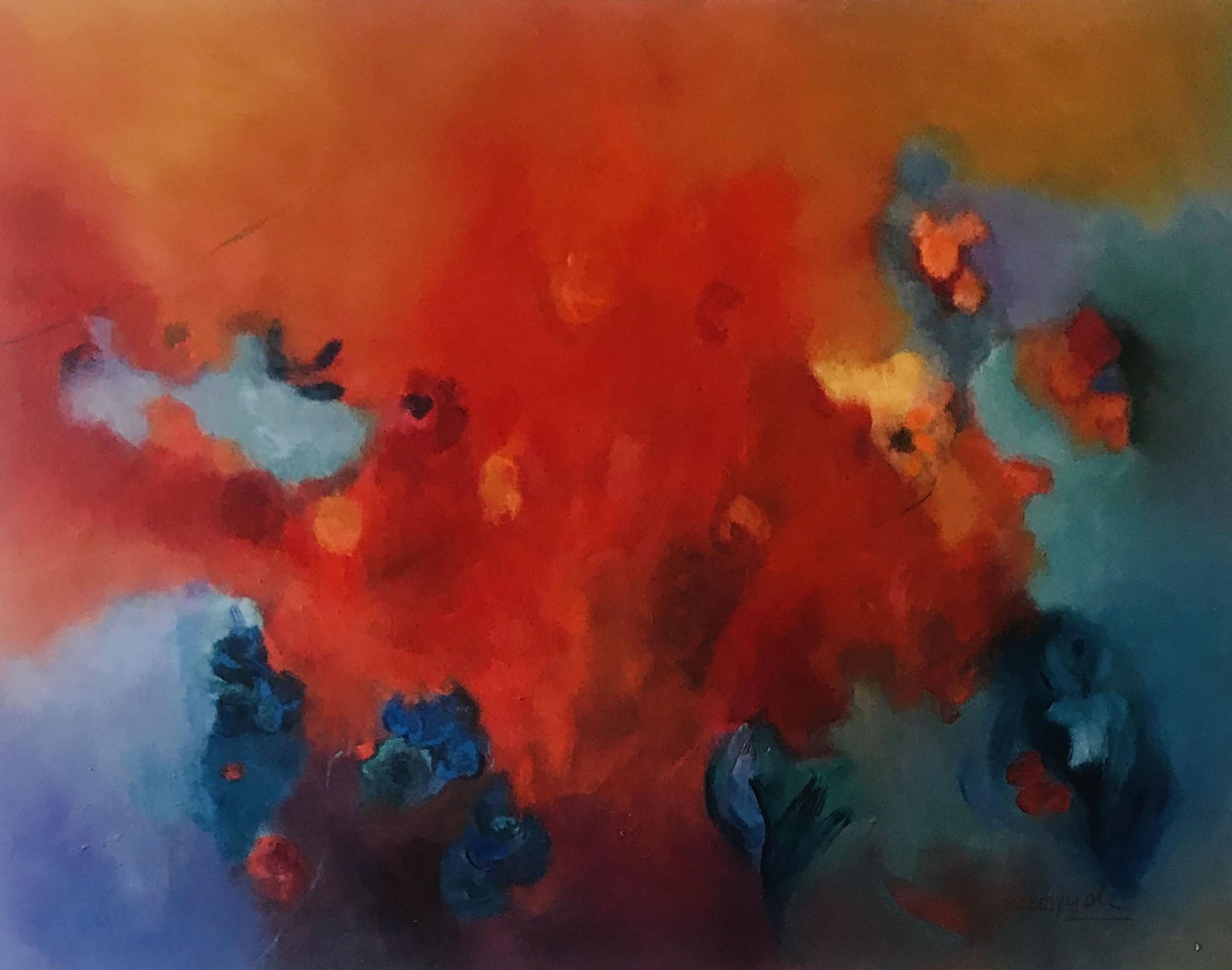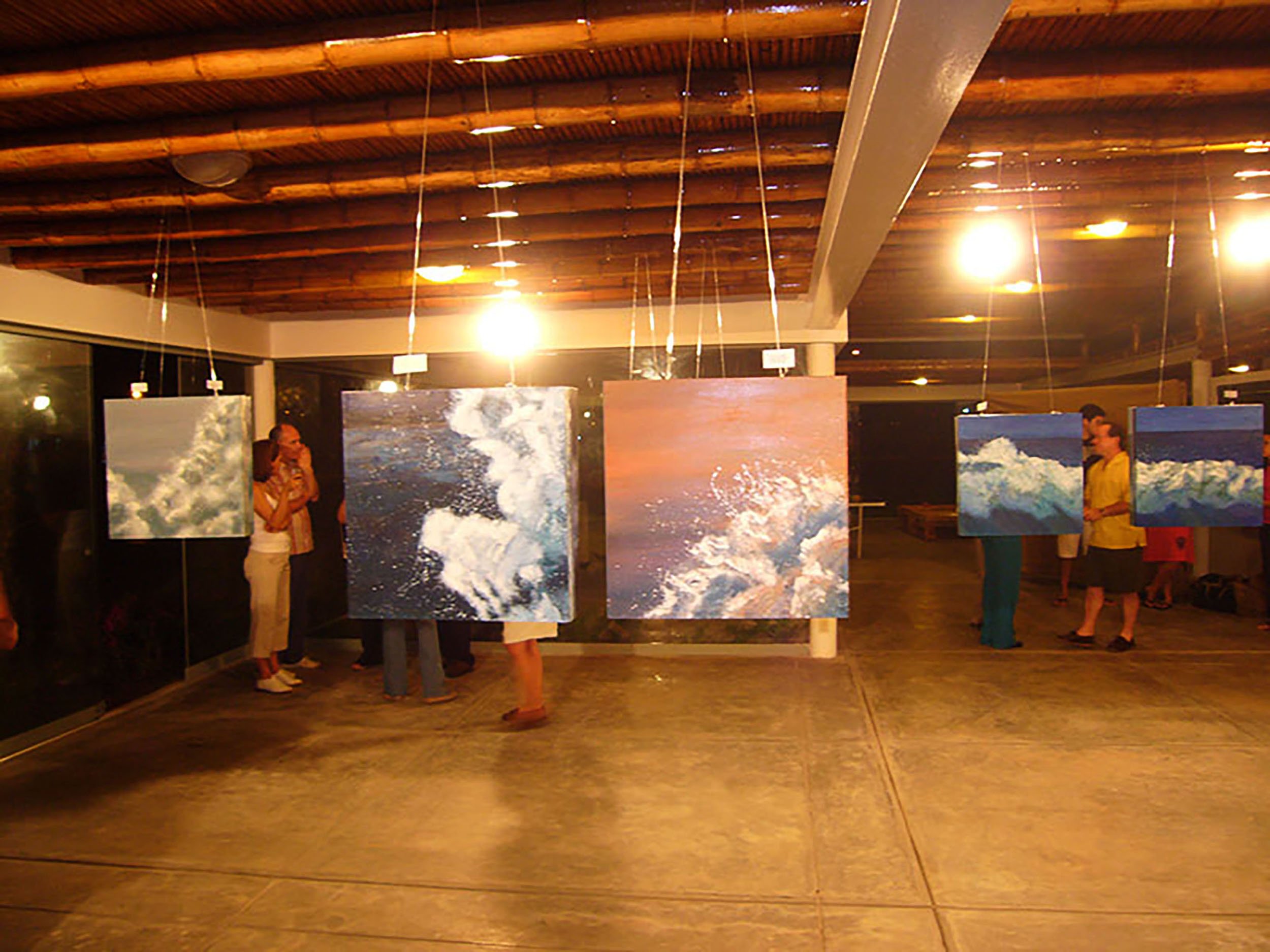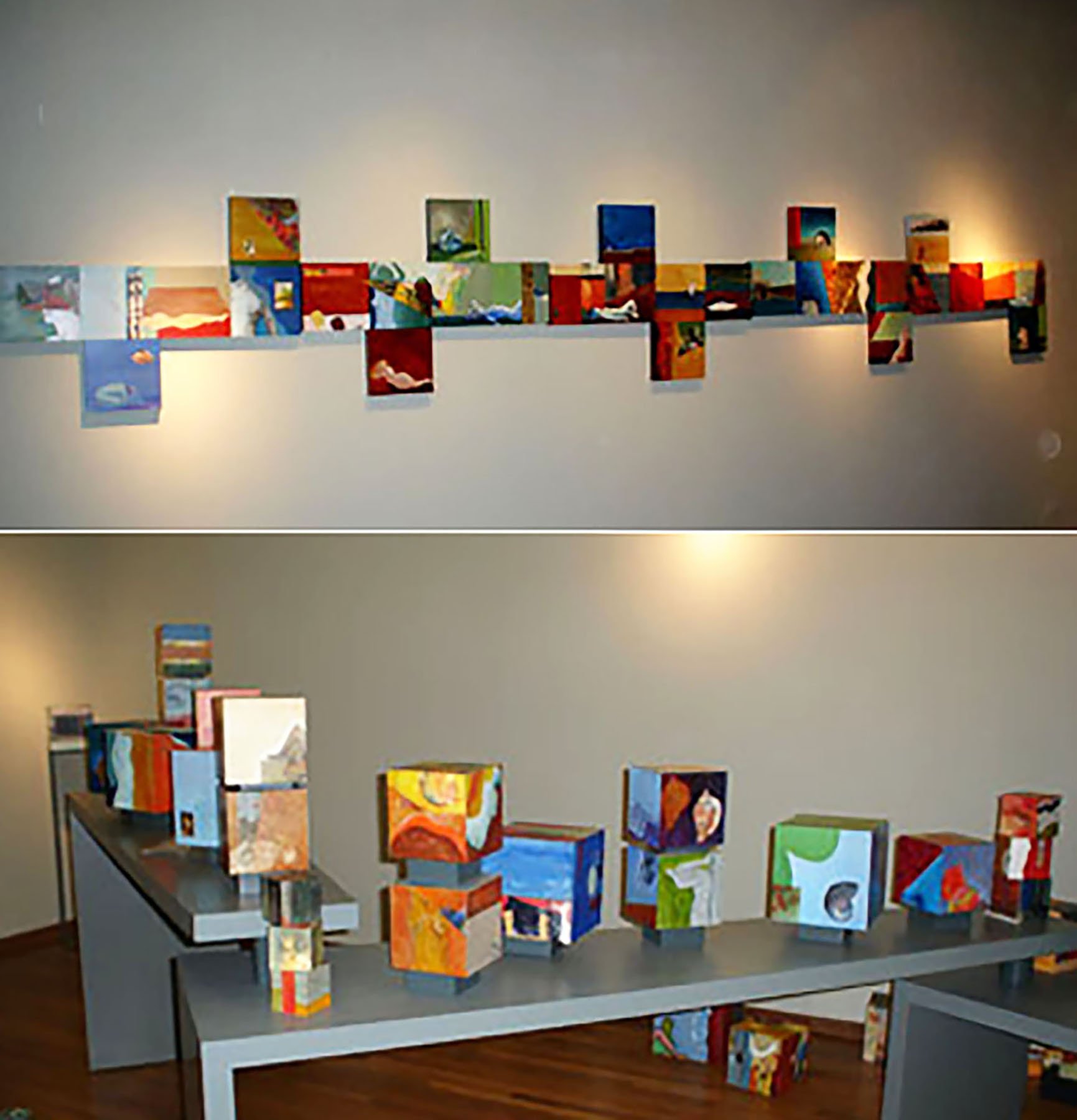Interview with Cecilia Arrospide
My first experience with art was at home. My mother was a fine artist, and apart from watching her paint, I shared with her books on artists she had. At school, I also was good in art classes because I had the ability to draw. I believe art is in my bones; I come from a family of artists, and my first artistic vocation was literature, but afterward, I started painting and never left it. I went deeply into this significant and profound world, and I am passionate about it. Throughout my artistic career, there have been various themes, always about color and its magic, mystery, everything color says, and the beauty of each one. The main motive is nature and its exuberance. This is my permanent inspiration. The message I want to transmit is mainly the joy of the harmony of colors and forms, like a conversation with the observer, who Will receives through his own perception; like when we watch a sunset, no explanation is needed, and we enjoy its magic.
My style is abstract, sometimes expressionist, sometimes more lyric about nature, and in some series, some forms are more architectonic. My main médium is oil with big brushes as well as action painting. I follow my body movements very intuitively.
I also work with collage on paper; in this case, what comes out is more surrealistic. My way of working on collages is with painting, cuttings, and many times of pictures I take purposely. It is a long process and the result is always a surprise. Many stories appear. They call the imagination. It is like a cocreation with the observer's own codes and paradigms. Who, according to his experience, puts his own and interprets the work with his glance.
I paint for the pleasure of the brush stroke and the harmony of color. I consider myself an heir of Monet Matisse, Gauguin, Kandinsky, and Klee, among others, who enjoyed color as the main element of their art.
How have your studies at the Faculty of Letters and Language and Literature influenced your artistic approach, and in what ways have your mentors like Leslie Lee and Miguel Nieri shaped your art?
My studies at the Faculty of Letters and Language and Literature were very important for my art. My first artistic vocation was Literature, and I learned a lot by reading and attending the university. I think studying in a good university is very important because it gives you criteria and a way of thinking about the world in general. This influence has explicitly been in my life as an artist and a human being as well. It taught me about the importance of philosophy and psychology apart from literature. I have always been a reader, and I still am. I am also a life coach and counselor in family constellations.
In this sense, one of the important lessons Leslie Lee gave me was that we as art students should be readers as well; reading about other artists' lives and methods was 50% of the education, he used to say. And so I did because while studying, I raised four children, and sometimes I did not have time to paint, so I read a lot and also had many opportunities to visit museums. He also taught me how museums selected works and put the artworks of different painters together, so my visits to museums in the USA or Europe had a unique background and I appreciated the artworks differently and I could have a more profound view. Regarding the technic, he had us painting in different color palettes so we could manage all colors, same as with Miguel Nieri, who taught me about the different scales of greys and composition and structure. Another essential teacher was Miguel Angel Cuadros. All three of them passed on to me their passion for painting and for color in itself. I consider myself an heir of Matisse, his bright and pure colors, and his freedom to paint “paint for the pleasure of the stroke,” according to Robert Hughes.
You have studied various mediums, including watercolor and drawing. How do you feel these different mediums have contributed to developing your unique artistic style?
Each médium has its own rules… watercolor is mainly about transparency and layers. “a la prima,” as we say. The freshness of colors applied with security, first hand, clean colors, from White to black, each color keeping its character. Drawing is all about structure and composition. In the series “Espacios Temporales” and “ a la prima,” strokes and colors are very important. I think drawing supports any piece of art regardless of whether you draw; you have the proportions, the composition, and the inside, and it appears without you being aware of it.
In your 'Juegos de Color' collection, you use vibrant colors and dynamic forms. Could you elaborate on what inspired this particular collection and how you experimented with light and color to convey the emotions and themes within each piece?
As mentioned in the previous question, I have always felt that my main motive is color. I enjoy painting bright colors very much; they remind me of summer, which I love. My inspiration is always nature, especially flowers, and during summer, in my city, Lima, bougainvilleas are exuberant. I have always painted (as drafts) bunches of flowers. And from these drawings, the movement of petals, their light and shadows. A different way I compose my artwork is by painting on very large pieces of paper on the floor and then selecting a part as a draft for a canvas, like when you select a part of a big landscape. I do not think previously, on the contrary, my work is very intuitive. I can say that sometime after the first or second layer or even when I follow a draft, I stop and decide where and how to continue or if I should stop and finish the canvas.
Looking back at your first individual exhibition in 1998 and your recent works, how do you think your art has evolved over the years?
I think it has evolved following my inner self, my inner move, and different moments in my life. For instance, at some point, my house was being remodeled, and I did not have a space to work so I started collaging with little wooden cubes. This led to a whole part of my work; I made two exhibits: “A, and I made two solo exhibitions, “Arte al Cubo” 2008 and “Metáforas” 2010, and I continue making collages as a divertimento, and I love it. Part of the remodelation was a big studio, which I enjoyed very much. I have plenty of space for big paintings, and as it is in my house, I can easily come up and see my work. Regarding the theme, I have always referred to nature. I made another series, “El mar, las olas,” which I say was made out of love. I started a painting for my son, who I like surfing, and decided to make a series…which was called “El mar, las olas,” 2007, which was exhibited on a beach near Lima.
Could you walk us through your creative process? How do you go from an idea or inspiration to a finished piece?
Now, my creative process has changed a bit. I usually have a draft or take photos of flowers and gardens and then select a part, and sometimes I draw the lines with a brush; sometimes, I start spreading the colors freely and see where it takes me. Almost always, I decide which color palette I will use. Sometimes, I spread paint with big strokes and stains, selecting two or three colors, and then I choose a part as a draft for the canvas. I am an oil lover. I think oil painting gives me a quality and possibilities other médiums don´t. Nevertheless, I use acrylic painting for collages and small pieces of Wood.
Having exhibited in various countries, how have different cultures and places influenced your artistic vision and output?
I think these influences have been unconscious; thinking about them brings to my memory words from Picasso when he found African masks, those that influenced his work, and when he said, “I do not seek, I find.” Every trip I have made has had an essential part in my journey as an artist. I once went to Northern France, where Monet painted, and absorbed the colors of the umbrellas on the beach, and the sunlight over the beautiful buildings. When I went to Amsterdam to the Van Gogh museum, I thought I was actually talking to Van Gogh or the sight of Rembrandt’s “La Ronda Nocturna.” When I come back from these trips, I feel inspired in a new way. And that reflects in my work like a new beginning.
Your 'Perfiles en la Luz' collection features a vibrant and serene exploration of nature and tranquility through oil paintings. Could you share the inspiration behind this collection and how you approached the theme of nature and introspection in your artwork?
After many years of painting in bright colors and structural abstract paintings, like action paintings, I felt a need to rest in quiet colors and bigger and round forms. It is like a zoom on flowers and their different shades of the same color. It is amazing how the canvas leads the way. Now I think I am more capable of following my intuition, intuitive movements of the hand and brush lead the way. I very much like big formats because they give me more freedom of movement and more possibilities of playing with forms in a way that sometimes you can see the background as a first plane and vice versa.
How do you define the purpose or mission of your art? What do you hope your audience takes away from your work?
For me it is need to paint and express myself through my work. It is my intention that the audience perceive the harmony of soft movements and colors. Whether they are bright color or soft whites… that is the purpose of my work. In fact I cannot paint when I am in the wrong state of mind or heart. Maybe I can draw or prepare some drafts but not paint. And also I only finish a canvas when a really like it and feel it is a Good work. If not I discard it.
Are there any upcoming projects or exhibitions you are particularly excited about? What future goals do you have for your art?
I have just exhibitted “Perfiles en la Luz” and always happens to me that after a solo exhibit I need a rest period, I am cleaning the studio, making drawing, reviews my files of drafts and small works... My future goal is continuing to paint but do not know yet what will come out.
What advice would you give to young artists who are just starting out and looking to make their mark in the art world?
My advice is: work, work, work, experiment, try new médiums, and have faith in themselves. Everyone is capable of achieving great things, if they follow their bliss. Enjoy the process and the result will be good.




















